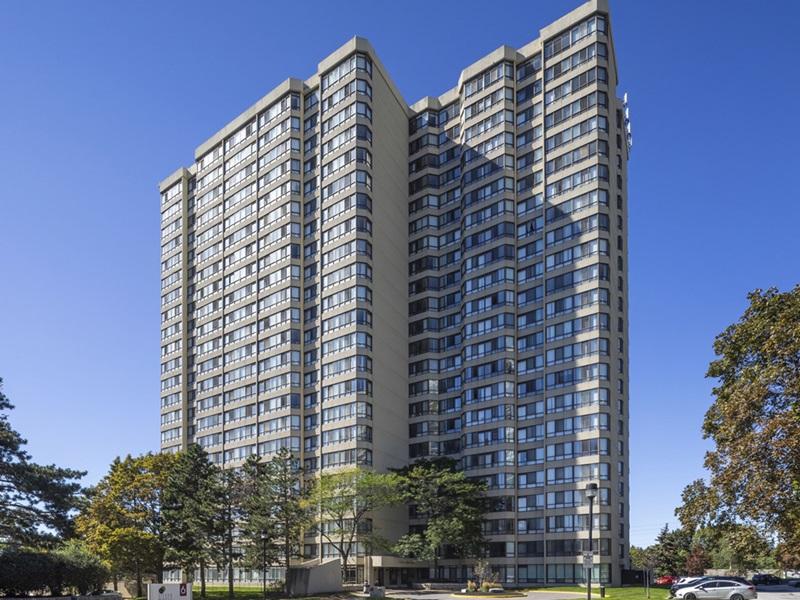
Trent Edwards, chief operating officer, Alberta, for Brookfield Residential. (Courtesy Brookfield Residential)
Downtown is central to Calgary’s economic future, but the city is facing a long road to recovery. The office vacancy rate remains in the low 30 per cent range and 13 million square feet of space – including entire towers – is sitting empty.
A double whammy of depressed oil prices, which began in late 2014, and the ongoing COVID-19 pandemic has slammed the commercial real estate market in the city’s core. Property values for downtown office buildings have plunged by $16 billion since 2015 – a dramatic 63 per cent decline in value.
The recent Calgary Real Estate Forum highlighted the plight of the challenged downtown office market and the city’s plans to invest $1 billion over the next 10 years in bringing the city’s core back to life during a couple of panels and presentations. However, it won’t be an easy journey.
The city so far has approved $45 million in financial incentives for downtown office conversions to residential properties.
Also allocated are an additional $5 million for some downtown improvements, $55 million for capital improvements, $5 million to activate downtown and public spaces and $10 million to support a dedicated team at the city to drive these and other potential initiatives.
Revitalizing downtown Calgary
Trent Edwards, chief operating officer, Alberta, for Brookfield Residential, said it’s going to take 10 to 15 years to get to where the city needs to go in this journey.
He said there needs to be about $450 million in incentives to effectively remove a vast amount of empty space. This would help with rebuilding a tax base, creating vibrancy by removing that black (or empty) space and filling it with residential or other forms of uses.
“We’re not just looking to try and fill all of this vacant space with residential space. There’s going to be lots of other forms, whether it’s student housing, or universities, or vertical farms,” Edwards said.
He noted that demolition might also be an option for some properties to create more parks or other amenity spaces. “We do need to get focused.”
The key, said Edwards, is creating a vibrant downtown to attract and retain talent to that core area.
“You look at some of these other cities – Austin, Nashville, Pittsburgh, Denver, even Detroit now. There’s a similar recipe that all of these cities have followed and again the pointy end of the stick is attracting and retaining talent because that will attract and retain capital.”
He said the formula is consistent – low taxes, ease to do business and a vibrant downtown.
“If we can focus on putting the amenity downtown, if we can focus on creating an exciting place where people want to come and attract that young talent, I think everything else does follow itself,” he said. “We have vacancy. We have affordability. But, unfortunately that doesn’t attract talent.”
Amazon’s tough, but valuable criticism
That was obvious in recent years when Amazon was looking to establish a second headquarters in Canada. Calgary strongly participated in the bidding game, but Edwards said the city received some harsh, but valuable feedback from the e-commerce retail giant.
“Their main comment was ‘You guys weren’t selected to be on a short list because your downtown sucks. It’s just not cool’ and that was one that hit me right between the eyes,” Edwards said.
“If we can create that exciting place to be, not only does it attract and retain talent but everybody else benefits because of course we’ll build that tax base back up, we’ll create jobs because we have the vacant space for people to be moving into and we have a good tax base relative to the rest of Canada.”

Thom Mahler, manager, urban initiatives and program lead, downtown strategy for the City of Calgary. (Courtesy City of Calgary)
Thom Mahler, manager, urban initiatives and program lead, downtown strategy for the City of Calgary, said the challenge for the core is exacerbated by the COVID-19 pandemic, the growing work-from-home trend, the growth in e-commerce, susceptibility to extreme storms such as flooding, a decline in tourism and business travel and the need to diversify the economy.
“In order to bring property value back up in our downtown core and to reinstitute the vibrancy that we were used to in Calgary, we need to attract more talent and how do you attract talent? Well, you have to have a great place,” said Mahler.
“There’s a synergy between designing our downtown and programming our downtown in a way that not only is fulfilling for all of our population, but also that has a specific line of sight toward the talent we’re trying to attract.”
Recreating vibrant neighbourhoods
That task is creating vibrant urban neighbourhoods, amenities where and when people want them, access to training, education and research, high transit connectivity, mobility options, connections to surrounding neighbourhoods, safety, cultural and entertainment attractions, and connections to the airport and the mountains.
“We need a new vibe in our downtown core. We need to review our regulations to make sure that we have things in place whether that’s approvals, whether it’s policy, to make sure that there’s not barriers but more importantly that it enables the types of development we’re trying to encourage,” said Mahler.
The $45 million downtown Calgary development incentive program was launched in August and there have been 13 applications to convert up to 600,000 square feet of office to residential development.
The grant itself is $75 per square foot and a maximum of $10 million per building. It’s possible to go above $10 million, but that would require going to city council to get additional investment.
Mahler said the city wants to transform Stephen Avenue to make it an “iconic’ main street for the downtown. The plan is to also transform 8th Street with a heavy emphasis on green space and spaces where businesses can spill out onto sidewalks. It also includes the extension of the west promenade along the Bow River further west.
Investments are also planned for the Olympic Plaza and the city is considering a new downtown public market to attract people.
Mahler said the top priority is finding the funding so the city can realize the overall revitalization plan. The $200 million is a start.
All governments need to be involved

Greg Guatto, president and CEO of Aspen Properties. (Courtesy Aspen Properties)
Greg Guatto, president and CEO of Aspen Properties, said a major investment from all three levels of government in the neighbourhood of $1 billion is necessary.
“The $45 million (incentive) has been a great start and I think we need $450 million over time to do that. Without this incentive, I can tell you that these office buildings would not get converted to residential. It’s just so important,” said Guatto.
“The other thing I think our city should consider strongly are incentives to attract businesses here to town.
“I look at it like owning a property. You’ve got to provide incentives or you’re not going to have a tenant in your portfolio and there is a payback for that, even if they leave at the end of their lease.”
He said significant private capital will follow if these plans are undertaken. A key is having the talent to attract businesses.
Guatto also noted the difficulty of converting some office spaces into residential. He said it’s unlikely there will be many conversion-to-condominium projects, but there is potential for more purpose-built rental.
“It’s going to take a dramatic rise in demand for residential which will lift rental rates and the downtown needs to be a cool place to live with amenities,” he said. “You’ve got to give people a reason to live downtown besides just cheap rent.”
Guatto said post-secondary institutions need to have a bigger presence in Calgary’s downtown, connecting with business and becoming a pipeline for talent.
“And by the way, if you want to convert an office building into something, student housing works pretty well,” he said.
Growing out of the energy economy
Guatto said Calgary is not just about energy.
There is the digitization of essentially every business driving growth in the tech sector including energy companies. It’s been happening in other major Canadian centres such as Vancouver, Toronto and Montreal.
Calgary is just late to the party, he said, because so many of those jobs were driven by traditional oil and gas and the education system was set up to feed that. However, things have changed.
“I can tell you anecdotally in our portfolio in this calendar year . . . we’ve done 325,000 square feet of new leasing and it’s mostly tech companies,” said Guatto. “Lots of really cool tech companies and that’s where the growth is coming from. It’s these tech companies.
“They start small and they’re the ones that are growing.”











